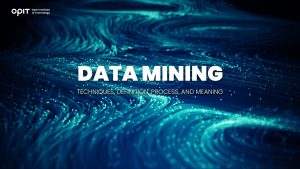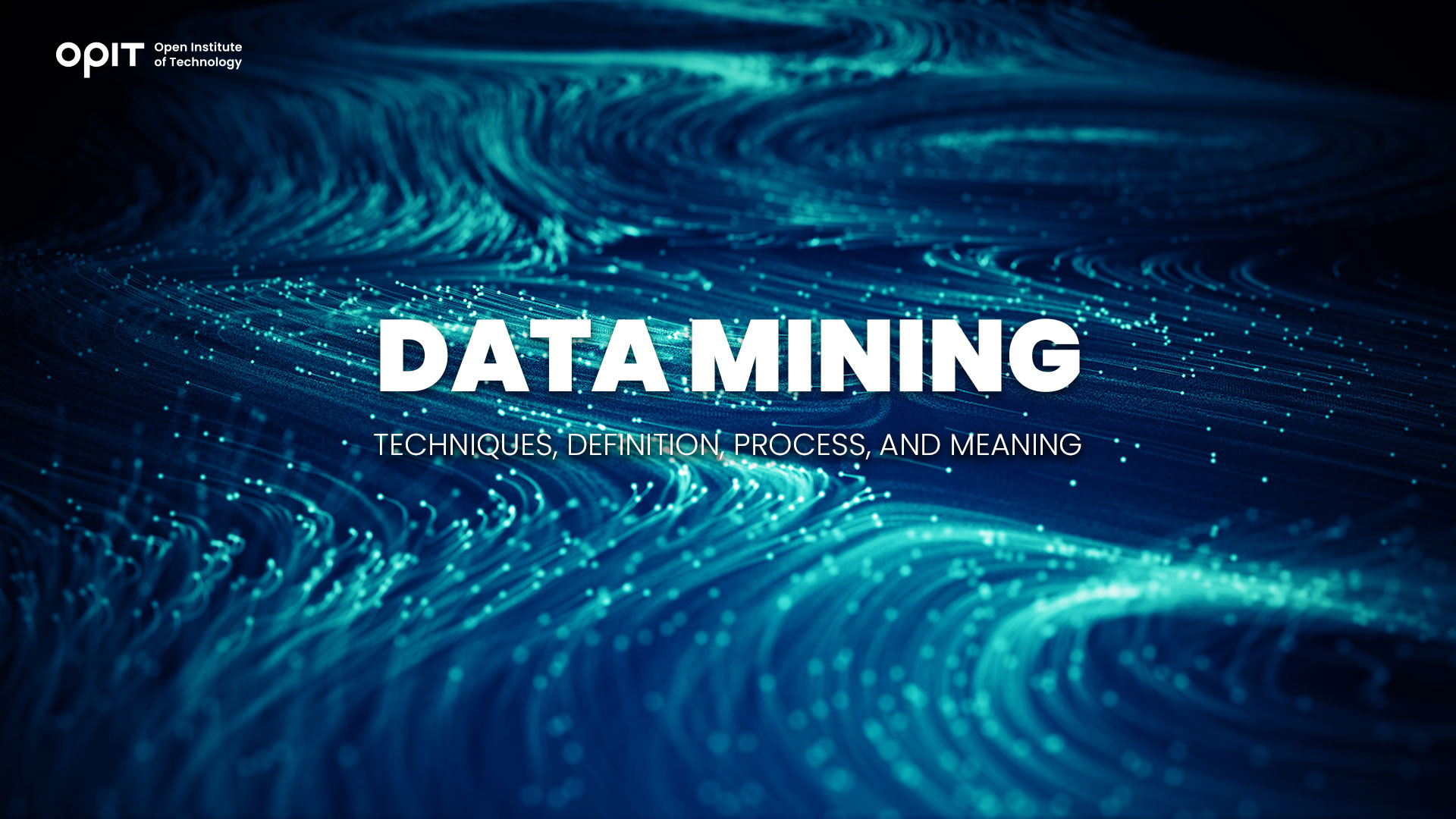

Think for a second about employees in diamond mines. Their job can often seem like trying to find a needle in a haystack. But once they find what they’re looking for, the feeling of accomplishment is overwhelming.
The situation is similar with data mining. Granted, you’re not on the hunt for diamonds (although that wouldn’t be so bad). The concept’s name may suggest otherwise, but data mining isn’t about extracting data. What you’re mining are patterns; you analyze datasets and try to see whether there’s a trend.
Data mining doesn’t involve you reading thousands of pages. This process is automatic (or at least semi-automatic). The patterns discovered with data mining are often seen as input data, meaning it’s used for further analysis and research. Data mining has become a vital part of machine learning and artificial intelligence as a whole. If you think this is too abstract and complex, you should know that data mining has found its purpose for every company. Investigating trends, prices, sales, and customer behavior is important for any business that sells products or services.
In this article, we’ll cover different data mining techniques and explain the entire process in more detail.
Data Mining Techniques
Here are the most popular data mining techniques.
Classification
As you can assume, this technique classifies something (datasets). Through classification, you can organize vast datasets into clear categories and turn them into classifiers (models) for further analysis.
Clustering
In this case, data is divided into clusters according to a certain criterion. Each cluster should contain similar data points that differ from data points in other clusters.
If we look at clustering from the perspective of artificial intelligence, we say it’s an unsupervised algorithm. This means that human involvement isn’t necessary for the algorithm to discover common features and group data points according to them.
Association Rule Learning
This technique discovers interesting connections and associations in large datasets. It’s pretty common in sales, where companies use it to explore customers’ behaviors and relationships between different products.
Regression
This technique is based on the principle that the past can help you understand the future. It explores patterns in past data to make assumptions about the future and make new observations.
Anomaly Detection
This is pretty self-explanatory. Here, datasets are analyzed to identify “ugly ducklings,” i.e., unusual patterns or patterns that deviate from the standard.
Sequential Pattern Mining
With this technique, you’re also on the hunt for patterns. The “sequential” indicates that you’re analyzing data where the values are in a sequence.
Text Mining
Text mining involves analyzing unstructured text, turning it into a structured format, and checking for patterns.
Sentiment Analysis
This data mining technique is also called opinion mining, and it’s very different from the methods discussed above. This complex technique involves natural language processing, linguistics, and speech analysis and wants to discover the emotional tone in a text.
Data Mining Process
Regardless of the technique you’re using, the data process consists of several stages that ensure accuracy, efficiency, and reliability.
Data Collection
As mentioned, data mining isn’t actually about identifying data but about exploring patterns within the data. To do that, you obviously need a dataset you want to analyze. The data needs to be relevant, otherwise you won’t get accurate results.
Data Preprocessing
Whether you’re analyzing a small or large dataset, the data within it could be in different formats or have inconsistencies or errors. If you want to analyze it properly, you need to ensure the data is uniform and organized, meaning you need to preprocess it.
This stage involves several processes:
- Data cleaning
- Data transformation
- Data reduction
Once you complete them, your data will be prepared for analysis.
Data Analysis
You’ve come to the “main” part of the data mining process, which consists of two elements:
- Model building
- Model evaluation
Model building represents determining the most efficient ways to analyze the data and identify patterns. Think of it this way: you’re asking questions, and the model should be able to provide the correct answers.
The next step is model evaluation, where you’ll step back and think about the model. Is it the right fit for your data, and does it meet your criteria?
Interpretation and Visualization
The journey doesn’t end after the analysis. Now it’s time to review the results and come to relevant conclusions. You’ll also need to present these conclusions in the best way possible, especially if you conducted the analysis for someone else. You want to ensure that the end-user understands what was done and what was discovered in the process.
Deployment and Integration
You’ve conducted the analysis, interpreted the results, and now you understand what needs to be changed. You’ll use the knowledge you’ve gained to elicit changes.
For example, you’ve analyzed your customers’ behaviors to understand why the sales of a specific product dropped. The results showed that people under the age of 30 don’t buy it as often as they used to. Now, you face two choices: You can either advertise the product and focus on the particular age group or attract even more people over the age of 30 if that makes more sense.
Applications of Data Mining
The concept of data mining may sound too abstract. However, it’s all around us. The process has proven invaluable in many spheres, from sales to healthcare and finance.
Here are the most common applications of data mining.
Customer Relationship Management
Your customers are the most important part of your business. After all, if it weren’t for them, your company wouldn’t have anyone to sell the products/services to. Yes, the quality of your products is one way to attract and keep your customers. But quality won’t be enough if you don’t value your customers.
Whether they’re buying a product for the first or the 100th time, your customers want to know you want to keep them. Some ways to do so are discounts, sales, and loyalty programs. Coming up with the best strategy can be challenging to say the least, especially if you have many customers belonging to different age groups, gender, and spending habits. With data mining, you can group your customers according to specific criteria and offer them deals that suit them perfectly.
Fraud Detection
In this case, you analyze data not to find patterns but to find something that stands out. This is what banks do to ensure no unwanted guests are accessing your account. But you can also see this fraud detection in the business world. Many companies use it to identify and remove fake accounts.
Market Basket Analysis
With data mining, you can get answers to an important question: “Which items are often bought together?” If this is on your mind, data mining can help. You can perform the association technique to discover the patterns (for example, milk and cereal) and use this valuable intel to offer your customers top-notch recommendations.
Healthcare and Medical Research
The healthcare industry has benefited immensely from data mining. The process is used to improve decision-making, generate conclusions, and check whether a treatment is working. Thanks to data mining, diagnoses have become more precise, and patients get more quality services.
As medical research and drug testing are large parts of moving the entire industry forward, data mining found its role here, too. It’s used to keep track of and reduce the risk of side effects of different medications and assist in administration.
Social Media Analysis
This is definitely one of the most lucrative applications. Social media platforms rely on it to pick up more information about their users to offer them relevant content. Thanks to this, people who use the same network will often see completely different posts. Let’s say you love dogs and often watch videos about them. The social network you’re on will recognize this and offer you even more dog videos. If you’re a cat person and avoid dog videos at all costs, the algorithm will “understand” this and offer you more videos starring cats.
Finance and Banking
Data mining analyzes markets to discover hidden patterns and make accurate predictions. The process is also used to check a company’s health and see what can be improved.
In banking, data mining is used to detect unusual transactions and prevent unauthorized access and theft. It can analyze clients and determine whether they’re suitable for loans (whether they can pay them back).
Challenges and Ethical Considerations of Data Mining
While it has many benefits, data mining faces different challenges:
- Privacy concerns – During the data mining process, sensitive and private information about users can come to light, thus jeopardizing their privacy.
- Data security – The world’s hungry for knowledge, and more and more data is getting collected and analyzed. There’s always a risk of data breaches that could affect millions of people worldwide.
- Bias and discrimination – Like humans, algorithms can be biased, but only if the sample data leads them toward such behavior. You can prevent this with precise data collection and preprocessing.
- Legal and regulatory compliance – Data mining needs to be conducted according to the letter of the law. If that’s not the case, the users’ privacy and your company’s reputation are at stake.
Track Trends With Data Mining
If you feel lost and have no idea what your next step should be, data mining can be your life support. With it, you can make informed decisions that will drive your company forward.
Considering its benefits, data mining will continue to be an invaluable tool in many niches.
Have questions?
Visit our FAQ page or get in touch with us!
Write us at +39 335 576 0263
Get in touch at hello@opit.com
Talk to one of our Study Advisors
We are international
We can speak in:




